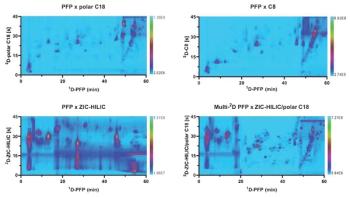
Investigating 3D-Printable Stationary Phases in Liquid Chromatography
3D printing technology has potential in chromatography, but a major challenge is developing materials with both high porosity and robust mechanical properties. Recently, scientists compared the separation performances of eight different 3D printable stationary phases.
Researchers from the Sapienz University of Rome (Italy) and Vrije Universiteit Brussel (Belgium) studied new ways to use 3D-printed stationary phases in liquid chromatography (LC) techniques. Their findings were published in the Journal of Chromatography A (1).
While integrating 3D printing technology offers potential in chromatography, it also comes with challenges that must be addressed to make the hardware a viable method for producing chromatographic media. Chromatographic materials must be porous (with pore sizes in the tens of nanometers range), to facilitate high surface area interactions with analytes, ensuring high separation efficiency. Additionally, these materials must have notable mechanical strength to withstand high pressures associated with modern chromatography techniques, such as high-performance liquid chromatography (HPLC) and ultra high-performance liquid chromatography (UHPLC). As such, developing 3D printable materials with both high porosity and robust mechanical properties is a critical challenge. In spite of this, 3D printing has enabled the creation of complex geometries using various materials, including metals, ceramics, and polymers.
In this study, the scientists investigated the separation performance of eight different 3D printable mesoporous stationary phases based on triply periodic minimal surfaces (TPMS). TPMS-based stationary phases have been proposed as promising geometries, though analysis is limited to studying chromatographic performance under purely hydrodynamic conditions. Their separation performances, for different values of the zone retention factor k′′, are analyzed in terms of plate height curves and kinetic performance factors. The two-zone moment analysis (TZMA) method, which is used to determine the dispersion tensor in hierarchical retentive porous media, was adopted to compute the axial dispersion coefficients, plate height curves, kinetic performance factors and the kinetic plots for all the geometries.
The article presents a comprehensive analysis to evaluate the feasibility of 3D printing TPMS stationary phases, by comparing the ideal unit-cell dimensions with the resolution achievable using the latest 3D printing technologies. The results proved encouraging; according to the scientists, unlike what was observed in the superficial retentive case, the kinetic plot analysis shows that optimal functioning conditions for mesoporous sheet-based TPMS structures can be associated with optimal dimensions of the unit cell compatible with printing resolution of cutting-edge 3D printers. Also, the contribution of the stationary zone’s internal porosity drastically changed the chromatographic performance of TPMS structures, with respect to the non-retentive (hydrodynamic) and superficially retentive cases.
When the plate height curves were analyzed, it was revealed that the best performing geometries, in terms of hmin and h100, are SDb, SGa and SPb, associated with lower values of the hydraulic diameter dh. Height Equivalent to a Theoretical Plate (HETP) curves (also known as Van Deemter curves) can differ significantly from those obtained in the superficial retentive case, both regarding the diffusive branch and in the convection-controlled branch, because transport mechanism changes dramatically when an analyte can penetrate and diffuse within the stationary zone instead of only being adsorbed superficially. A net relationship between hminand Pemin is established, namely hmin × Pemin =βk′′ where βk′′= 4γeff(1+k′′) is independent of the geometry, because between all the structures, for the same external porosity, exhibit close values of effective longitudinal diffusion coefficient γeff at the same k′′ value.
Overall, sheet-based TPMS structures proved to yield the best-performing geometries because kinetic plot analysis revealed that optimal functioning conditions are associated with optimal dimensions of the unit cell compatible with the printing resolution of modern 3D printers.
Reference
(1) Lauriola, C.; Moussa, A.; Desmet, G.; Adrover, A. Dispersion Properties of Triply Periodic Minimal Surface Stationary Phases for LC: The Mesoporous Case. J. Chromatogr. A 2025, 1750, 465876. DOI:
Newsletter
Join the global community of analytical scientists who trust LCGC for insights on the latest techniques, trends, and expert solutions in chromatography.




